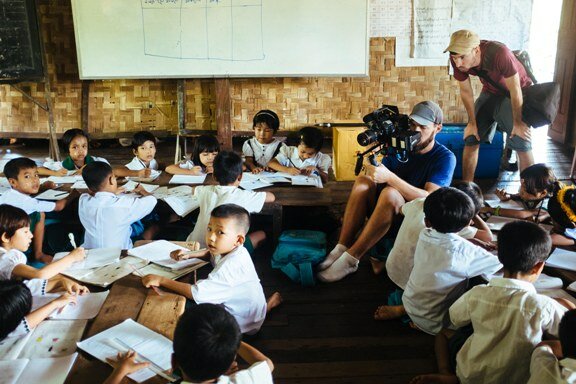The Global Network is happy to share the work of Jan Douglass, PhD Candidate at James Cook University, who is conducting a study in Myanmar focused on lymphatic filariasis in young people.
By Jan Douglass, PhD Candidate at James Cook University
Infection with Lymphatic Filariasis (LF) can lead to distressing disfigurement and disability, but the time between infection and development of chronic disease can take many years. In a first-of-its-kind study, researchers from James Cook University in Australia are measuring early stage changes in young people infected with LF.

Dr Khin Than Win (WHO) inspects the legs of a young man in Magwe region who has developed elephantiasis.
Physical measurements, more usually employed to detect changes in lymphedema after cancer treatments, are being used to detect early stage changes in young people aged 10 – 21 living in a Filariasis endemic region in Central Myanmar. ICT test cards were used to identify the 50 positive case in Amarapura Township. These were then gender and age matched with 50 negative young people.

Dr Tint Wai Tun (Mandalay VBDC) and Jan Douglass conduct ICT testing in Amarpaura Township during October 2014.

Jan Douglass and local Myanmar research assistant Wanna Aung
measure skin changes in the legs of a young person infected with LF
Plasma samples are also taken and will be analysed for levels of pro inflammatory cytokines and vessel endothelial growth factors (VEGF). These biochemical markers will be compared to the physical measure to determine if a simple test can be developed to identify young people infected with LF who may be most at risk of developing chronic disease.
Jan Douglass is conducting this study as part of her PhD Candidature James Cook University and travelled to Myanmar in October 2014 to collect baseline data. A mass drug administration (MDA) of deworming drugs will be carried out in December 2014 and Jan will travel back to Amarapura Township in February 2015 to take follow up measures. Comparing the physical measurements and biochemical markers before and after MDA may provide valuable information on the continued risk of lymphatic dysfunction even if the MDA is successful in interrupting disease transmission in endemic regions.
Funding for this project has come entirely from private donors, to contribute to the project please visit www.myanmar-project.com
To view the video blogs of baseline data collection please visit www.myanmar-project.com/blog
See the work Global Network is supporting in Myanmar here: www.end7.org/impact/myanmar



